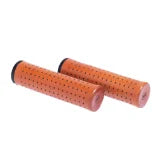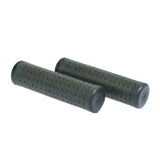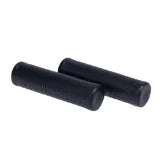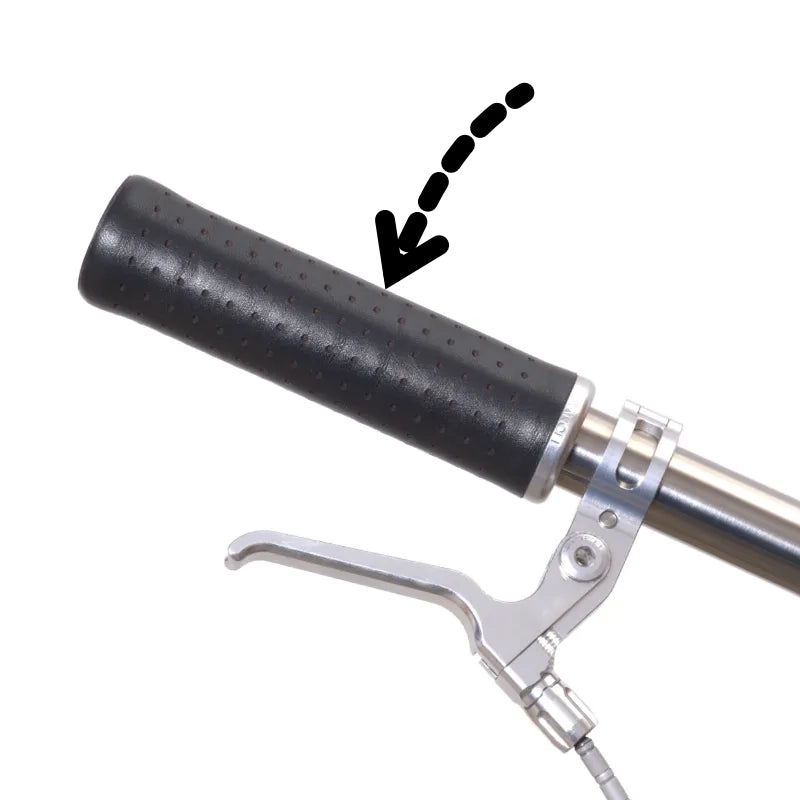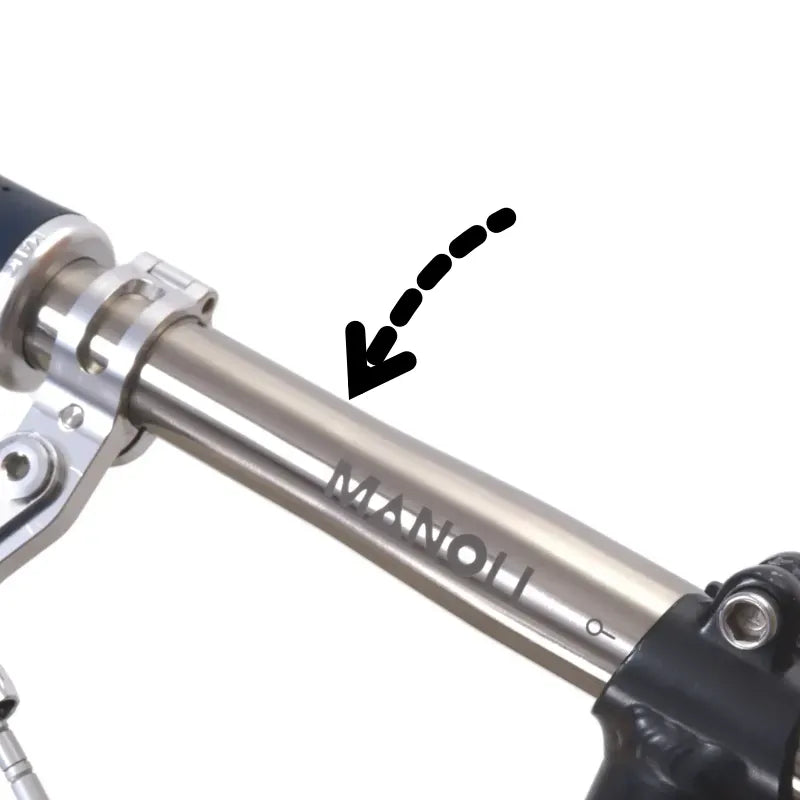What to do about sticky bike grips?
Bicycle grips – an underestimated component
The importance of bicycle grips is often totally underestimated.
On the one hand, many bicycle manufacturers (e.g. Brompton) view them as an easy way to save costs—after all, it's a component that's not safety-relevant. That's why you often find cheap, low-quality rubber or plastic grips even on high-end bicycles.
Bicycle grips are one of the most heavily used parts of a bicycle – and that's from our palms. It's hard to believe, but our hands, with their fine texture, act like sandpaper. We constantly rub against the grips from all sides. It's no wonder, then, that you see so many bicycles on the streets with completely worn-out grips. Bicycle grips should actually be replaced regularly. But who actually does that?

Why do bicycle grips start to sticky?
The fact that many grips become sticky over time is due to the material. Often, a silicone-like plastic is used, which initially feels pleasantly soft and grippy. Over time, however, these materials degrade due to friction, UV radiation, sweat, and heat. The surface begins to smear, stick, and the grip slowly turns into small particles – microplastics.
These particles stick to our skin, clothing, and ultimately even our bodies. Recent studies show that microplastics can cross the blood-brain barrier and accumulate in the human brain . One study found that an average of about seven grams of microplastics accumulate in the brain over eight years—roughly equivalent to the weight of a plastic spoon. Not a particularly appetizing thought.

What is the alternative to sticky plastic grips?
The alternative to conventional plastic or rubber handles is handles made from natural materials. These are non-sticky, biodegradable, and simply more comfortable to hold. The best options are cork, wood, and leather.
Cork bicycle grips
Cork is a solid option – as long as it's real cork. Unfortunately, many so-called cork handles are made of imitation cork, which suffers from the same disadvantages as plastic handles. It's worth taking a closer look: Is it real cork or just an imitation? Here's a picture of a truly unappealing cork handle:

Wooden bicycle handles
Wooden grips look elegant, but they have their pitfalls. Wood dries out over time, cracks, and develops fissures—and especially with the thin walls of bicycle grips, these often simply break through. The result: dangerous splinters in the palm of your hand and slippery handlebars.

Leather bicycle grips – the most durable solution
Leather bicycle grips are the highest quality—and most durable—option. They not only offer a unique feel, but also clear functional advantages: They conform to the hand, regulate temperature, and absorb moisture.
Leather feels pleasantly cool in summer and not freezing cold in winter. And it cares for itself thanks to your skin's natural oils. No comparison to plastic or rubber, which degrade over time.

The quality of the leather is crucial. You should definitely choose vegetable-tanned leather. This is preserved with plant-based tanning agents – for example , tannins from grape skins . In contrast, chemical tanning often uses chromium VI. And you definitely don't want to be handling that all the time.
Handlebar grips made of thick leather are particularly durable. As with high-quality leather shoes, a little rain won't bother them. Just don't leave your bike out in the wet for long periods of time – just as you wouldn't leave leather shoes out in the rain. Leather can withstand a lot, but not everything.
Compare leather handles new and after a few years of use
Here is an interesting comparison so you can see for yourself how leather develops over time.
The first image shows a detail of a Manoli leather grips made of thick leather , as it looks brand new. You can clearly see the texture of the leather—it's almost reminiscent of the texture of your own skin.

The second photo shows the same leather grips after about three years of daily use in all weather conditions. The bike has been knocked over a few times and is leaned against a wall daily. Therefore, you can see some scratches and minor signs of wear. But instead of becoming sticky, the friction of the palms simply polishes the leather. It becomes smoother and develops a beautiful patina. The leather's good qualities are retained—and even improve over time.

Conclusion: Tired of sticky handles?
If you're tired of sticky hands and microplastics in your everyday life, maybe it's time to make the switch. Leather bike grips are not only stylish, but also durable, comfortable to hold, and healthier – for you and the environment.

